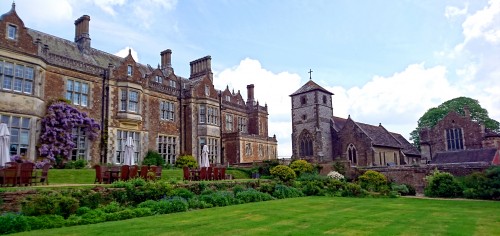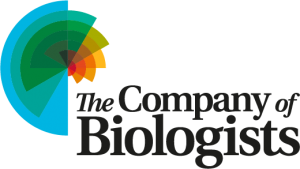Here we hear the experiences of three students who completed a developmental biology course in Zhiyuan College in Shanghai, as well as an introduction to the course by organiser Guojun Sheng
Zhiyuan College (https://zhiyuan.sjtu.edu.cn/articles/701) of Shanghai Jiao Tong University (STJU) is an undergraduate talent-training program founded by then president Zhang Jie in 2010. Its philosophy is to place a small group of selected students in a non-traditional learning environment so that they can explore their genuine academic interest and realize their full intellectual potentials. Each year, Zhiyuan College recruits about 20-30 students majoring in Biological Sciences (other majors include Mathematics, Chemistry, Physics, Computer Sciences, Engineering and Biomedical Sciences). Developmental Biology is an elective course offered to all second- and third-year Zhiyuan students, with a usual class-size of 7-15.
The course organizer(s) decides the topics to be covered and invite colleagues who share their passion for developmental biology research and training to teach at Zhiyuan for 1-2 weeks each. Lecturers for this year’s animal development include Drs. Jeremy Green, Shigeo Hayashi, Antoon Moorman, Olivier Pourquie, Fengwei Yu, Weimin Zhong and myself (The course also includes ongoing plant development lectures organized by Prof. Wanqi Liang). Lectures are divided into class-room style teaching (2/3) and journal-club style presentation and discussion (1/3). For most students, this course is the first instance when they get a systematic introduction to developmental phenomena and concepts which had fascinated many of us before we chose developmental biology as a career. Thanks to the small class size and enthusiastic lecturers, students get an early peek into developmental wonders. Each year, after the course, a couple of students kindle their inner passion and pursue further training and education in developmental biology.
Student experiences
Why I study developmental biology
Xinyu Wang
Before I took the course, I considered developmental biology to be just about how a fertilized zygote becomes a baby through cell division and cell differentiation. But when I truly got into it, I found this was quite a shallow representation of the subject, and that there was lots of charm in development.
From the conservation of Hox genes from sea urchin to human, we see the great power of evolution. From the dynamic process of gastrulation, we see the elegant design of the body plan. From the grafting experiments of the Spemann organizer, we see another opportunity of regeneration. All of these impressive scenes greatly broadened my view of developmental biology.
Besides these interesting parts, the idea of interdisciplinary experiments also attracts me. Development is the final result, but the access to get this result is variable. We can see through the egg shell to know how chicken embryos form. We can use forward and reverse genetics to study the important molecules in AP axis formation. We also can utilize bioinformatics strategies to screen homologous genes in different organisms.
The journey of studying developmental biology is far from terminal, and the insight that organisms give will encourage me to work hard in biology.
What I learnt in developmental biology
Yankun Li
This semester we took a course on animal developmental biology for animals and I learnt a lot. Here are some of my feelings on this course.
Arranged in order, there are 7 professors teaching this course in turn. Prof. Sheng was the first to come. He introduced the whole view and outlook of developmental biology, as well as some basic concepts on early embryo development, such as gastrulation. Then, Prof. Zhong came, who was charged with the early development of the nervous system. What impressed me most was the way that he induced and brightened our mind on the topics, though he was somewhat strict. During Prof. Moorman’s stay, I received knowledge not only in academic but also in other aspects. Firstly, I can visualize the cardiac development through his heart model. What’s more, in the seminar, he told us about 3D reconstruction of human embryo. What a fantastic technology that can convert 2D pictures to a 3D model! Besides, the wide conversation between us made it clearer for me how scientists thought about questions. I enjoyed Prof. Hayashi’s lectures very much, by the end of which I knew more about cell-cell junctions. However, I did not do such a good job in the mid-term exam. A-week-long stay might be a little bit short for Prof. Hayashi, because I thought that he still had something to share with us and I retained some questions to ask him, unfortunately, not in time. Prof. Yu told us something about Drosophila and some experiences in the lab. Then Prof. Pourquie came to teach us in the middle of April: his movies gave a better understand on Hox genes. Finally, Prof. Green visited our campus. He is a talkative British with an appealing accent. His lectures were lively and he made the process of morphogenesis concrete in details by comparison, etc. Besides, I appreciated that he taught us how to use a confocal microscope.
Finally, I must say that each professor’s efforts are very respectable. They did their best to teach us the experiences they have got from their lives in research, and so lightened the future of our own scientific research. Thank you all for the cheering lectures. I will never forget the precious knowledge you told us.
Before and after taking the course
Yangye Zhang
The initial reasons why I chose to take the developmental biology course was to fulfill my credit requirements as well as equip myself with more knowledge. Actually, at that time, I had no idea which field in biology I should choose for my further study, so I decided to try as much as I can. Luckily, I met with the one I am willing to devote myself to.
I could still remember the first lecture, which contained lots of movies showing the early embryonic development of Drosophila, Xenopus, birds and mice. I was impressed with these well-organized processes. The more we looked into the detail, the less we knew and the more it attracted me. Later, there were other professors coming to show us certain system development. During that period of time, I learnt lots of experimental techniques to see or test gene expression as well as the way to logically analyze the pathways and links during development. Besides, we also learnt the backgrounds of ESCs and iPSCs, which are good materials to test our hypothesis and reconstruct organs in vitro. Although some parts were a little bit difficult to me, e.g. imaging the 3D gastrulation, I never thought of giving up or felt discouraged. In contrary, I grew strong ambition to figure them out. At that time, I set my dream as being a developmental biologist.
This year, I offered to be the teaching assistant of this course. Although I knew there would not be many students who become real developmental biologists in the future, the way of critical thinking and other information learnt from the course can also benefit us a lot in other fields. I liked it so much and I would like to recommend others to learn developmental biology as well.
Picture gallery
Do you want to share your experience of learning or teaching developmental biology? We’d love to hear from you!
 (3 votes)
(3 votes)
 Loading...
Loading...


 (No Ratings Yet)
(No Ratings Yet)














 (3 votes)
(3 votes)
